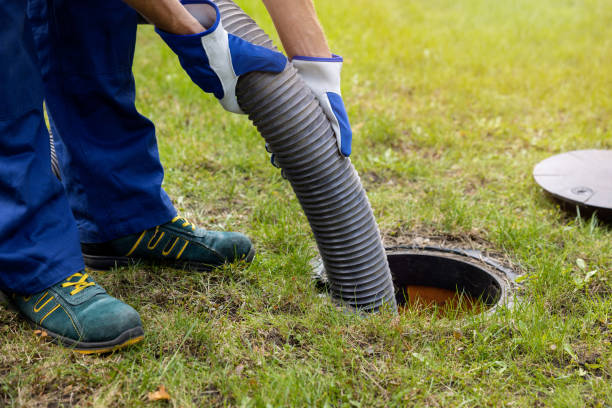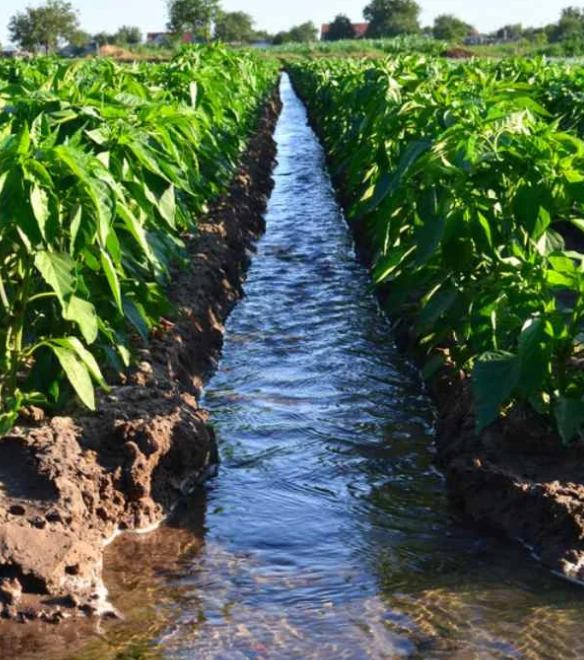
Effective Drainage System Installation in Woodland Hills: Protecting Your Outdoor Space
A well-maintained outdoor space requires more than just beautiful landscaping. Consulting Lawn sprinkler services in Woodland Hills at regular intervals are mandatory. It also requires an efficient and reliable drainage system. Lawn and landscaping drainage systems play a vital role in preventing issues like flooding and water damage by effectively redirecting water away from your property. With a carefully designed system that combines both surface and subsurface solutions, you can ensure that your yard remains healthy, functional, and visually appealing.
How a Drainage System Installation is Done?
Installing a drainage system involves a systematic approach to ensure its effectiveness. The process typically includes the following steps:
Lawn Irrigation System Repair
An experienced drainage installer will assess your property to identify areas prone to excess water accumulation. This evaluation helps determine the most suitable drainage solutions for your specific needs.
Designing the System
Based on the assessment, a landscape drainage contractor will create a customized plan for your drainage system and personalized landscaping needs. This plan may include a combination of catch basins, French drains, swales, or other subsurface drainage options.
Excavation and Preparation
Once the plan is finalized, the installation process begins. This involves excavating the designated areas where the drainage components will be placed. The excavated areas are then properly prepared for the installation of residential landscape drainage systems.
Installing Catch Basins
Catch basins are crucial for collecting surface water and preventing it from pooling in low-lying areas. These basins are strategically positioned to capture water runoff and direct it into the drainage system.
French Drain Installation
french drainage systems installation are effective subsurface drainage solutions. They consist of a perforated pipe wrapped in a permeable fabric and surrounded by gravel. The pipe collects water and redirects it to a desired location away from your property.
Swale Construction
Swales are gently sloping channels designed to redirect water flow. They are created to efficiently guide water towards a drainage point or natural watercourse.
How a Drainage System Installation is Done?
Installing a drainage system involves a systematic approach to ensure its effectiveness. The process typically includes the following steps:
Assessment and Planning
An experienced drainage installer will assess your property to identify areas prone to excess water accumulation. This evaluation helps determine the most suitable drainage solutions for your specific needs.
Designing the System
Based on the assessment, a landscape drainage contractor will create a customized plan for your drainage system and personalized landscaping needs. This plan may include a combination of catch basins, French drains, swales, or other subsurface drainage options.
Excavation and Preparation
Once the plan is finalized, the installation process begins. This involves excavating the designated areas where the drainage components will be placed. The excavated areas are then properly prepared for the installation of residential landscape drainage systems.
Installing Catch Basins
Catch basins are crucial for collecting surface water and preventing it from pooling in low-lying areas. These basins are strategically positioned to capture water runoff and direct it into the drainage system.
French Drain Installation
french drainage systems installation are effective subsurface drainage solutions. They consist of a perforated pipe wrapped in a permeable fabric and surrounded by gravel. The pipe collects water and redirects it to a desired location away from your property.
Swale Construction
Swales are gently sloping channels designed to redirect water flow. They are created to efficiently guide water towards a drainage point or natural watercourse.
How to Install a Drainage System in Your Yard?
If you’re considering installing a drainage system in your yard, here are some key steps to follow:
Assess the Problem Areas
Identify the areas in your yard where water accumulates or causes damage. This will help you determine the most appropriate drainage solutions for those specific areas. Also, check if drip system repair is required.
Plan Your System
Work with a yard drainage contractor to design a comprehensive drainage system that addresses the identified issues. Consider factors such as the slope of your yard, soil type, and existing landscaping features.
Select the Right Drainage Components
Choose the drainage components that best suit your needs. This may include catch basins, French drains, swales, or a combination of these options.
Prepare the Installation Area
Clear the designated installation areas of any obstacles such as plants, rocks, or debris. Ensure proper grading to facilitate water flow towards the drainage points.
Install the Components
Follow the installation guidelines provided by the manufacturer or seek professional assistance. Proper installation is crucial to ensure the functionality and longevity of your drainage system.
When Should You Install a French Drain?
French drains are versatile drainage solutions that can effectively address various water-related issues. Here are a few scenarios where installing a French drain is often recommended:
Excessive Water Accumulation
If your yard experiences standing water or excessive pooling after rainfall, a French drain can help redirect the water away from your property.
Sloping Yard
If your yard has a slope that directs water towards your home or causes erosion, a French drain can divert the water along a desired path, preventing damage and potential flooding.
Basement or Crawlspace Flooding
Installing a French drain around the perimeter of your home’s foundation can help prevent basement or crawlspace flooding by intercepting and redirecting water away from the building.
Proper installation of a drainage system is crucial to maintaining a healthy and attractive outdoor space. By implementing effective surface and subsurface drainage solutions like catch basins, French drains, and swales, you can safeguard your property from water damage and ensure its long-term beauty. If you’re facing water-related issues or seeking professional drainage installers in Woodland Hills, our experienced drainage system installation in Woodland Hills is here to assist you. Contact us today to discuss your drainage needs and create a comprehensive solution for your outdoor space.

